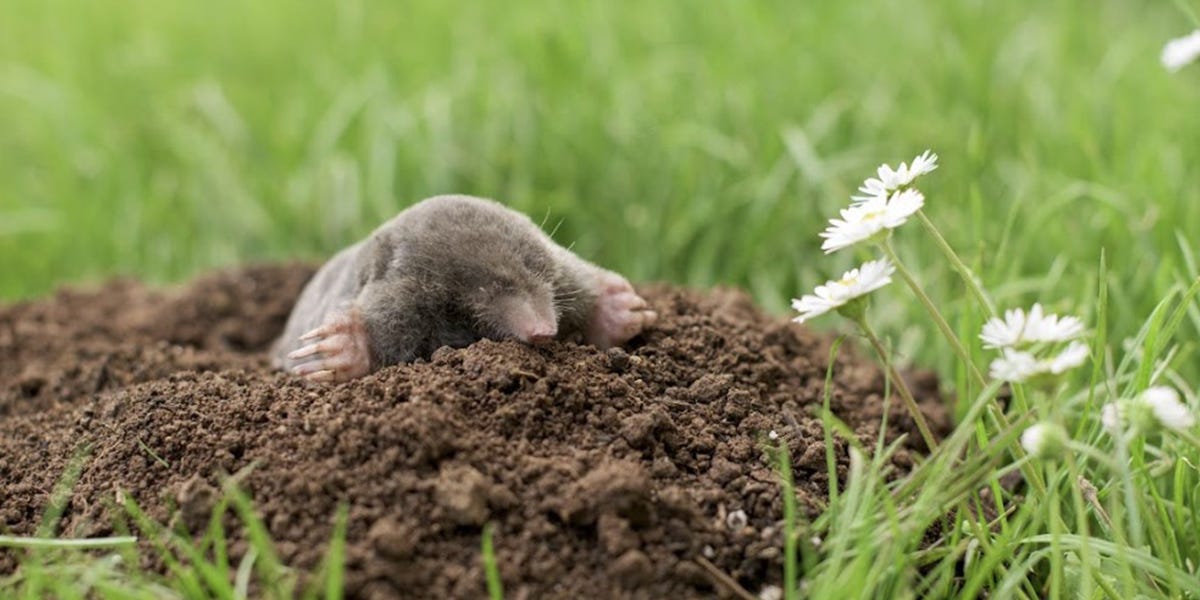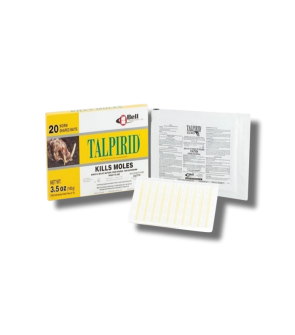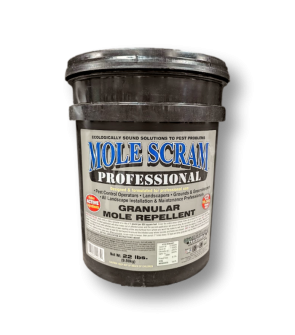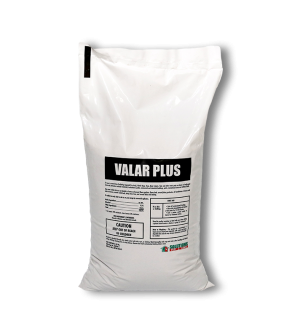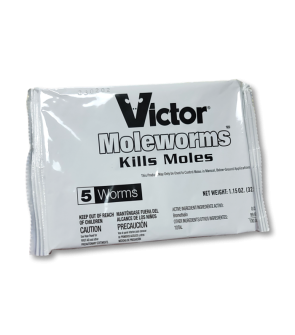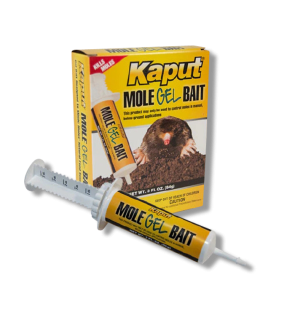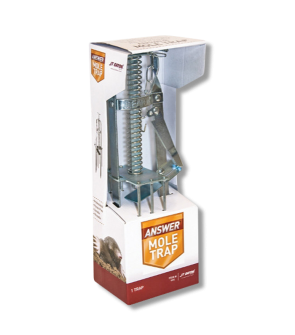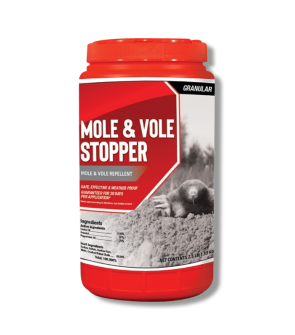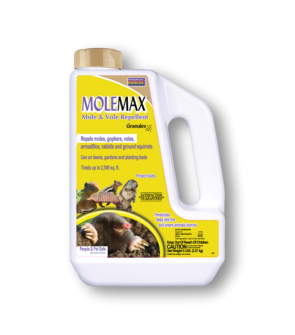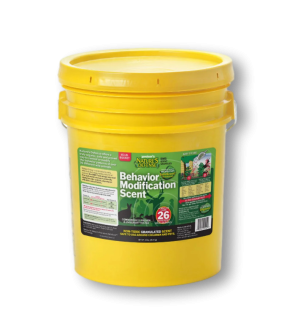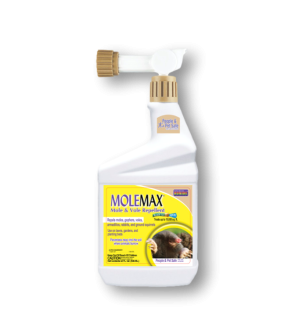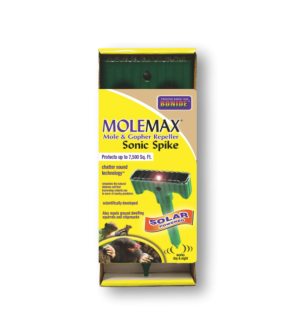Gain access to personalized product screening, the best pricing, rewards, and more!
Most Effective Products
Mole Control: How To Get Rid of Moles
This page is a general mole control guide. Using the products and methods suggested, you will get control of moles. Follow this guide and use the recommended products, and we guarantee 100% control over the moles. Consult local and state guidelines to see if moles are a protected species in your location before applying control.
While several different pests can intrude upon your lawn, perhaps there is no more significant threat to a yard than a mole. When they venture upon a lawn and begin burrowing holes, they not only destroy the look of your lawn but also cause walking hazards hidden in the grass.
Moles are relentlessly digging burrows and are on a never-ending search for food to satisfy their insatiable appetites. Wherever lawn insect and worm populations are high, moles will be there to dig and feast on the insects, completely disregarding the damage they inflict on a homeowner's lawn.
These underground pests can be highly destructive to crops, fields, and gardens. While moles do not consume plants, they disrupt their root system, which could lead to plant injury or death. They can also destroy backyards and golf courses by creating surface tunnels that make any lawn look unsightly.
If you encounter a mole problem on your property, our DIY mole Control guide can help. Learn what smart DIY approaches and high-quality professional DIY mole control products are needed to overcome a mole invasion.
Identification

Before you can carry out treatment, you will need to be sure that the pest you are dealing with is a mole and not some other animal. Misidentification can lead you to use the wrong treatment methods, wasting time and money. Here are some traits you can use to pinpoint what moles look like for identification:
- Moles have long hairless snouts and measure about 4 to 11 inches in length. Their bodies are cylindrically shaped with a short tail.
- They have small eyes and ears hidden in their fur and spend most of their time underground.
- As underground animals, they have large claws used for digging, making it easy for them to burrow holes.
- They spend most of their time underground but can inhabit numerous habitats. They can be found in grasslands, gardens, sand dunes, woody areas, backyards, and golf courses.
Use the image and description above to help you identify moles on your property; if you are unsure, contact us, and we will have one of our pros assist you with the correct identification.
Inspection
Once you have confirmed that you are dealing with moles, you can move on to inspection. During this phase, you must discover where the moles are active and observe what may attract them to your property. This will help you in determining where to focus your treatment application.
Where To Inspect
Moles live underground but occasionally come to the surface to collect leaves and grasses for their burrows. Look at your lawn, gardens, fields, crops, and wherever you find dirt hills (or molehills).
What To Look For
Molehills and their tunnels are the most common and easy signs of infestation. Molehills are different from gopher tunnels in that gopher tunnels underneath the ground and create kidney-shaped mounds. In contrast, molehills are oval in shape and create surface tunnels that elevate the earth and create small hills (or ridges) that connect them.
The molehills will lead you to an active tunnel. Inspect these mole mounds with a probe by sticking the probe a couple of inches from the displaced dirt; if the probe gives no resistance in the soil, you’ve found your tunnel. Once you have found the tunnel, it is time to apply treatment.
Another way to tell if there is a mole in your yard or landscape is if there are dead patches of grass. As moles tunnel underneath your foliage to feast on insects, they damage the plant roots, leading to discoloration, wilting, and eventual death.
Treatment
Once you have confirmed mole activity, it is time to begin treatment. Remember to read all product labels, follow the application instructions on these labels, and stay safe by wearing personal protective equipment (PPE).
Moles are most active in the early morning or evening during the spring and fall months. However, they are year-long pests that can come out anytime there is a plentiful food source or when there has been consistent rainfall to make the soil easier to travel and feast.
As prolific burrowers, these underground pests can easily evade treated areas and feast on other parts of your yard. We recommend first using Valar Plus Bifenthrin Granules and Mole & Vole Stopper Granular Repellent to eliminate their food source and keep them from traveling to other parts of your property to evade other products being used. Homeowners not seeking to harm moles infesting their property should only use these two products.
We recommend using a combination of Victor Moleworms and the Answer Mechanical Mole Trap to eliminate moles. The Answer Mechanical Mole Trap is a trap that can be set with metal spikes that, when triggered, will quickly clamp down on the mole underneath. The Victor Moleworms is a poison bait that mimics worms (one of their favorite food) that, when ingested, will kill the moles.
Step 1: Eliminate Food Source
Moles are attracted to soil-borne insects like millipedes, centipedes, or other pests that travel into or near their tunnels, like crickets. These pests will not leave your yard or come towards other products being used until there are no longer any insects for the mole to feed on. Valar Plus Bifenthrin Granules is a granular insecticide that is labeled to treat many different lawn and subsurface insects like millipedes. This product continues to fight against these pests for up to 3 months.
Determine how much Valar Plus Bifenthrin Granules to use by measuring the square footage of your treatment site. To do this, measure the length and width of the treatment area in feet, then multiply (length X width = square footage).
Apply between 2.3 to 4.6 lbs. of Valar Plus Bifenthrin Granules per 1,000 sq. ft. of turfgrass. We recommend using a push or broadcast spreader to spread the granules across your lawn.
Load the appropriate amount of Valar Plus Bifenthrin Granules into your selected spreader. Broadcast it uniformly by walking across your treatment in parallel lines once, then at a perpendicular angle (like a grid pattern) the second time.
Once Valar Plus Bifenthrin Granules has been applied, activate it with 0.5 inches of water.
Step 2: Create a Barrier with Repellent
Moles are prolific pests of gardens and landscapes as these sites provide ideal conditions for soil-born insects. They also prefer moist, loam soils over the yard's standard thick, dense soil. For this reason, you will need to create a barrier around these sites with a repellent labeled for use in these areas.
Mole & Vole Stopper Granular Repellent is an organic, granular product that irritates the mole's sense of smell and taste from areas treated with this product. As a non-toxic formulation, this provides humane control and increases homeowners' use of other mole control products. This product can be used near your garden, landscape, and parts of your property that you do not want moles to visit.
This product must be applied with a garden, push, or handheld spreader. Apply Mole & Vole Stopper Granular Repellent liberally to dens, tunnels, entries, and plants that need protection. When using near-edible crops, apply a perimeter application.
When 30 days have passed after the first application, reapply Mole & Vole Stopper Granular Repellent over the area previously treated.
Step 3: Set the Answer Mechanical Mole Trap
Once you have discovered active tunnels by probing with a stick, allow two days to pass by. If the holes you identified have been sealed back up, these are active tunnels, where you will place the Answer Mechanical Mole Trap.
For best results, you should set your traps later in the afternoon or early in the evening. Once the surface burrows have been identified and proven active, set your trap by carefully leveling the surface burrow and injecting it into the ground with the safety in place so you can insert it deeply into the burrow without fear of springing it on yourself.
Once the trap has been inserted deep into the ground and on top of the burrow, ensure the trigger pan touches the top of the surface burrow, release the safety, and allow the spikes to penetrate the tunnel. You can move the spikes up and down to create small holes and ensure that when the trap is sprung, they won’t be obstructed as they spring downward.
Set your trap and walk away. You have successfully inserted and placed your mole trap.
Step 4: Apply Victor Moleworms
Victor Moleworms is an effective bait that can lure and kill moles quickly because they are molded to look like worms. Once you have located all the active tunnels in the molehills, mark the holes and wait 2 days. If the holes have been sealed, they are active tunnels, and this is where you will place the bait.
To bait the tunnels, drop one Victor Moleworm through the probe hole, using the probe to push the bait completely into the tunnel. Cover the hole with a piece of sod, a small rock, or a piece of newspaper to allow for visual inspection.
Repeat bait application every 5 to 10 feet of each active deep tunnel. Check for the effects of treatment 5 days after bait application using the same procedure for determining tunnel location. Return 48 hours later and retreat all active tunnel systems until mole activity has ceased or the pest itself perishes.
Prevention
After removing moles from your property, you must implement preventative measures to ensure they don't return. Here are some preventative measures we suggest following to keep moles away from your yard and landscapes.
- Mow when your turf has reached a height of 3 inches to eliminate suitable conditions for insects. Additionally, you must prune overgrown tree branches, limbs, and leaves to prevent moisture in turf and other conditions for insects to live.
- Rake fallen leaves, twigs, and other plant debris, as this helps to increase moisture in the soil, which is needed for some insect species' home conditions. The mole is less likely to visit your property with the decrease in insects.
- Treat your lawn every 3 months with a long-lasting insecticide like Valar Plus Bifenthrin Granules to help prevent moles from becoming attracted to your property and control the presence of other insects for this pest to feast on.
- Seal mole tunnels with rocks and dirt to deter this pest from traveling to and from frequently visited areas.
- Reapply Valar Plus Bifenthrin Granules every 3 months to eliminate insects that moles need to feed on. You will also need to apply Mole & Vole Stopper Granular Repellent to keep moles out of your property throughout the year, especially in the spring and fall.
Key Takeaways
What are Moles?
- Moles are destructive animals that can trespass onto a property by burrowing underground to eat grubs and other small insects.
How To Get Rid of Moles
- We recommend first applying Valar Plus Bifenthrin Granules, then Mole & Vole Stopper Granular Repellent to control their food sources and increase their contact with the other products being used. You will then set the Answer Mechanical Mole Trap and Victor Moleworms, which will become more enticing to moles due to the previous products.
Preventing Mole Reinfestation
- Prevent moles from returning by removing their food source and creating a barrier on your property. Spread Valar Plus Bifenthrin Granules across your lawn every three months to eliminate insects that moles tend to feast on. Repel moles from your yard with Vole & Mole Stopper Granular Repellent by spreading it liberally every thirty days.






